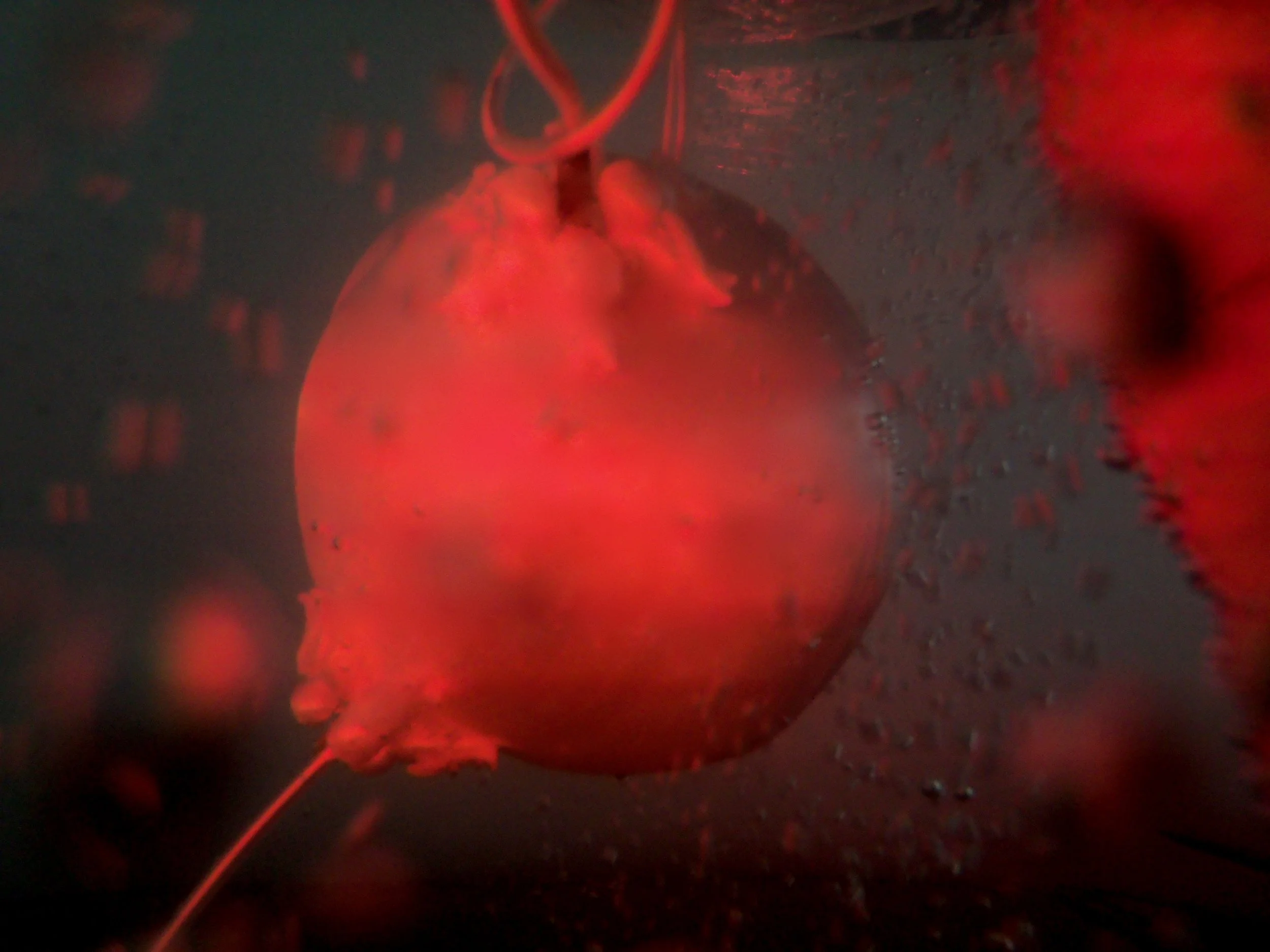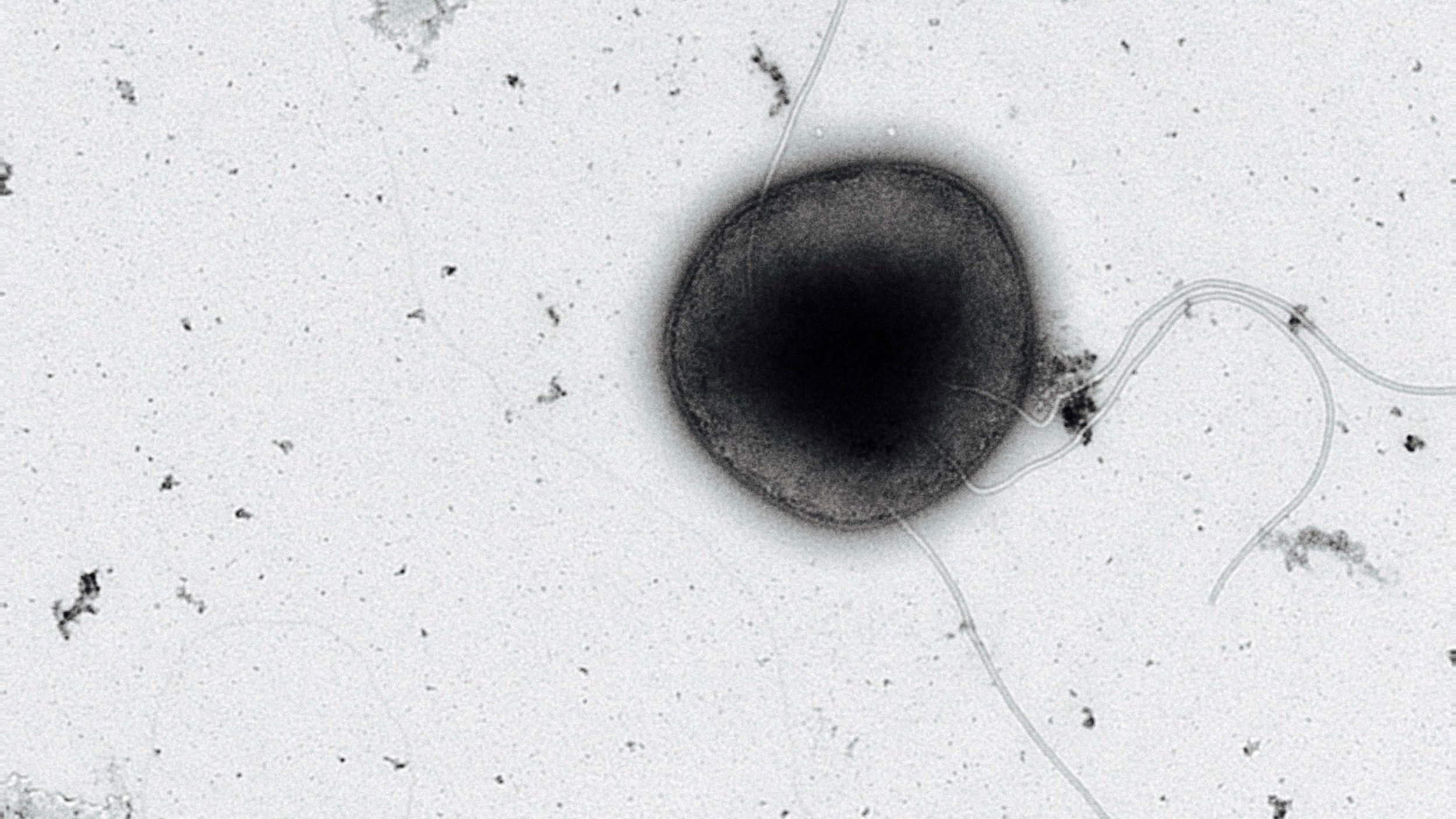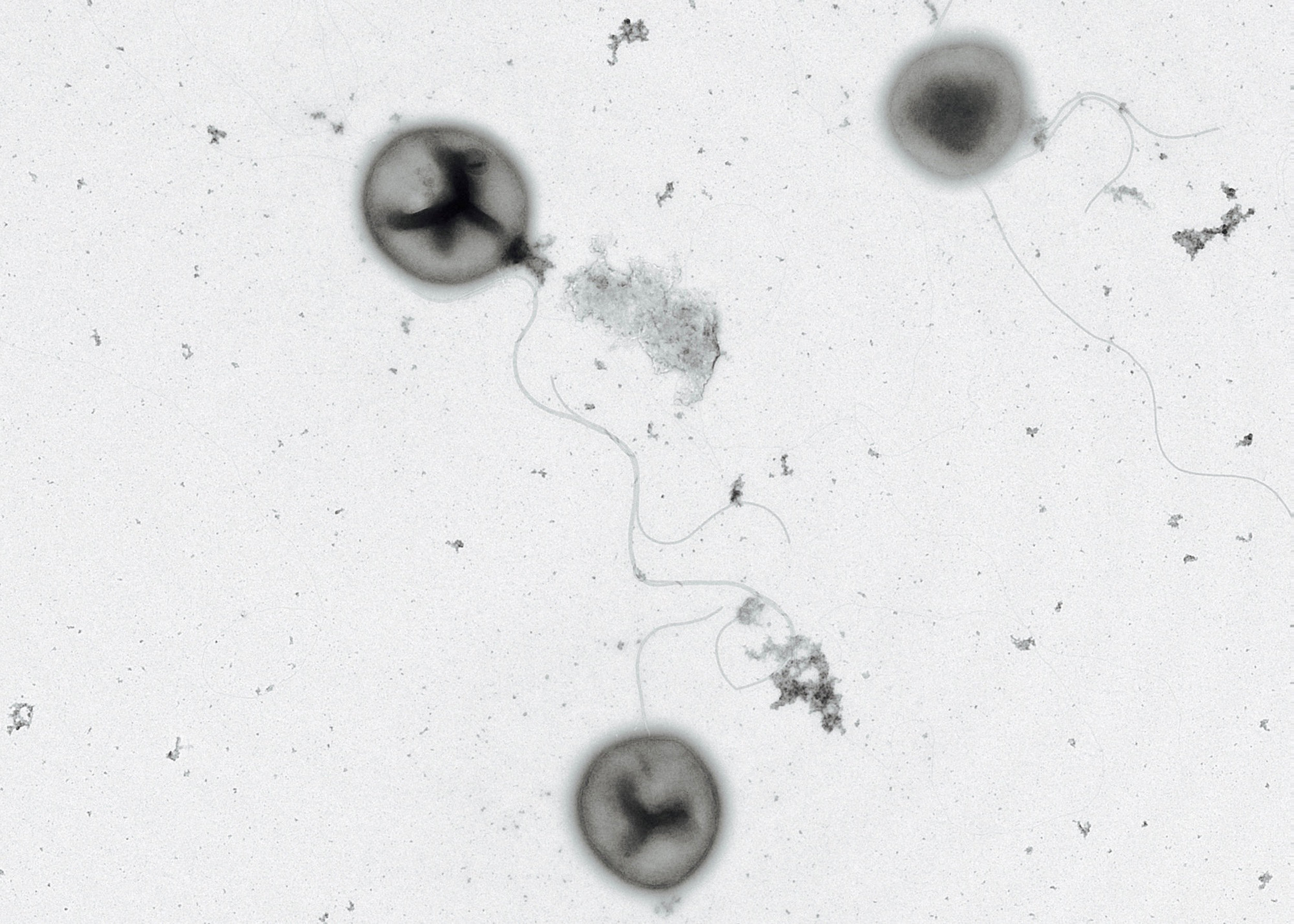Week 134_ArchaeaBot: A Post Singularity and Post Climate Change Life-form
ArchaeaBot: A Post Singularity and Post Climate Change Life-form
By Anna Dumitriu and Alex Ma


LABoral Centro de Arte y Creación Industrial (Gijón, Spain) will launch the display of “ArchaeaBot: A Post Singularity and Post Climate Change Life-form” on the 20th September 2018 as part an open day event with two round table discussions
This cutting edge new project by British artists Anna Dumitriu and Alex May was created at LABoral as part of an EMAP (European Media Art Platform) residency and takes the form of underwater robotic installation. The artwork explores what ‘life’ might mean in a post singularity, post climate change future, and is based on new research about archaea (the oldest forms of microbial life on Earth) combined with the latest innovations in machine learning & artificial intelligence aiming to create the ‘ultimate’ species for the end of the world as we know it.
The artwork was inspired by the EU FET Open MARA Project (Molecular Analytical Robotics Assays) and the research of their collaborator Amanda Wilson at Imperial College London who uses high resolution cryomicroscopy to study a species of archaea known as Sulf0lobus acidocaldereas, an ancient microbe that has evolved to live in hot acidic environments.

The artists have also collaborated with Daniel Polani, Professor of Artificial Intelligence at the University of Hertfordshire (where they are visiting research fellows) to develop a machine learning neural network for the robot.
“These archaea are some of the oldest life-forms on the planet, they love hot, acidic environments and that made us think about how they could be ideally adapted for the kind of world humanity is creating through climate change and pollution. Then we thought about the kinds of artificial intelligences and robots we might create to live on after us, after a technological singularity. And so that is what we’ve tried to build, the ideal life-forms for a post climate change and post singularity future”. (Anna Dumitriu and Alex May, August 2018)
The artists worked together in a studio at LABoral for a month, building the robots, designing and 3D printing the archaea ‘bodies’ and archaellar motors (based on the molecular motors that enable Sulfolobus acidocaldereas to swim around based on the MARA project’s research), waterproofing the robots and designing their interactions and software, also working with the FABLAB Asturias at LABoral.


The artists will show the results of their residency in an installation open to the public in LABoral Centro de Arte y Creación Industrial (Gijón, Spain) from 20th September accompanied by guided tours and supporting information.
On the 20th September, as part of the X World Conference on Bioethics, LABoral will host the programme of round tables: Future Life. Art, science and technology facing environmental challenges.
The event will begin with the panel Connections: approaches to environmental challenges from art and science, a conversation between artists María Castellanos and Alberto Valverde and Javier Cristobo, Director of the Oceanographic Center of Gijón. Then artists Anna Dumitriu, Alex May will discuss their project ArchaeaBot: A Post Singularity and Post Climate Change Life-form in detail in conversation with their scientific collaborator Amanda Wilson with a focus on the theme of Future Life.
Both conversations will be introduced and moderated by Karin Ohlenschläger, Artistic Director of LABoral ArchaeaBot will premiere at the Ars Electronica Festival in Linz, 5th - 10th September 2018 in the Bunker at POSTCITY, and there will be a talk as part of the Artists Talks series on the Workshop Stage at POSTCITY on Saturday 8th September 2018, it will then tour to Bandits-Mages in Bourges, France and Furtherfield in London.